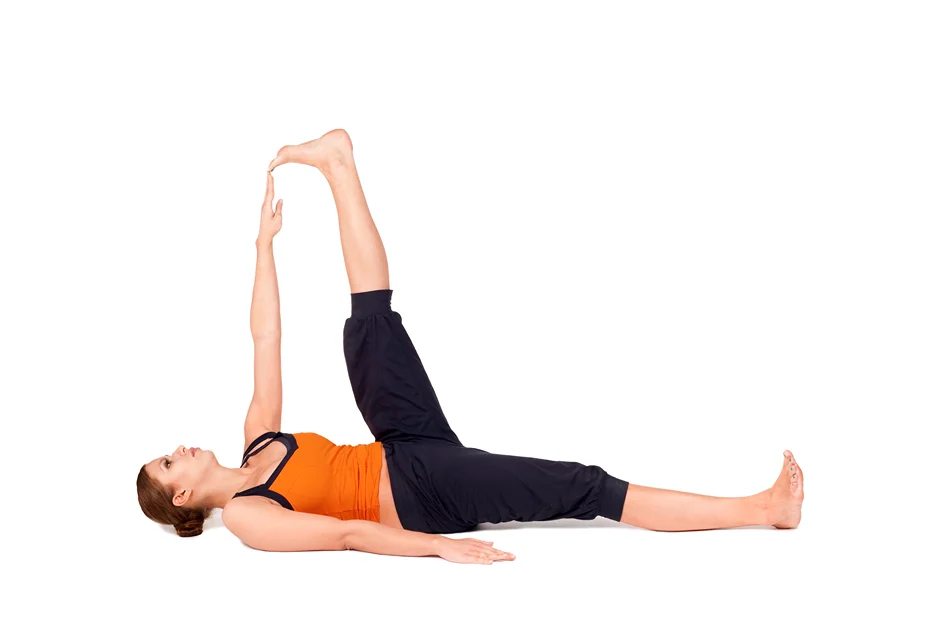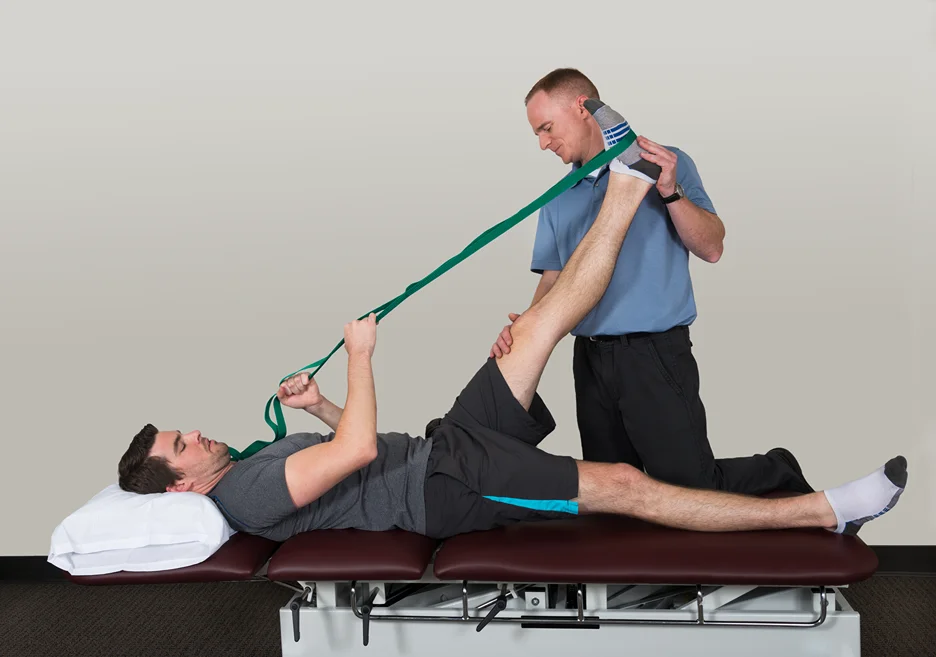Discover How Gentle Nerve Glides Can Help Reduce Irritation and Improve Mobility
If you’re suffering from the searing, shooting agony of sciatica, you know all too well how it can utterly disrupt your daily life. But what if you could gently “floss” your nerves and finally experience relief?
Neural gliding exercises are revolutionizing sciatica treatment by mobilizing the sciatic nerve and soothing irritation. When performed correctly, nerve flossing can provide immense relief for sciatica sufferers.
Read on to learn everything you need to know about using nerve flossing to alleviate sciatic nerve pain and improve function.
What Is Nerve Flossing and How Does It Work for Sciatica?

Nerve flossing exercises are designed to mimic the natural motions your nerves go through as your body moves and stretches. The goal is to glide the nerves back and forth within their sheaths through gentle repetitive movements. This helps release any tension, adhesions, or inflammation affecting the nerves.
For sciatica specifically, nerve flossing targets the sciatic nerve that runs down the back of each leg. This large nerve extends from the lower back through the hips and buttocks, branching down to the thighs, calves and feet. Anywhere along this path that the nerve gets compressed or irritated can trigger sciatic pain.
A study reveals that patients who received nerve flossing technique (NFT) plus conventional physiotherapy improved significantly more than the group receiving only conventional physiotherapy. Specifically, the NFT group reduced their pain score from 7.2 to 3.1 on the visual analog scale compared to a decrease from 7.3 to 6.2 in the control group.
Nerve flossing aims to gently “pull” on the sciatic nerve, stretching it in multiple directions to eliminate problematic adhesions. This reduces irritation and inflammation, allowing the nerve to glide and slide freely without catching. By mobilizing the sciatic nerve and surrounding tissues, symptoms like pain, numbness and tingling are often significantly reduced.
Think of it like flossing your teeth – you are clearing out any debris that shouldn’t be there so things can function smoothly. It’s an effective way to “unclog” a nerve that has gotten jammed up.
Are Nerve Flossing Exercises Effective for Sciatica?
Research indicates that nerve gliding techniques can be highly effective at reducing sciatic nerve pain. A 2016 study published in the Journal of Physical Therapy Science found that a neural mobilization program decreased low back and leg pain in patients with lumbar disc herniation. Given that lumbar disc issues are a common cause of sciatica, this suggests neural mobilization can provide symptom relief.
Various medical resources recommend nerve glides as a safe, non-invasive treatment option for painful sciatica. While more research is still needed, many health providers incorporate nerve flossing into their treatment plans to help patients manage this condition.
When combined with other conservative treatments like targeted stretches, anti-inflammatory medication, and physical therapy, nerve gliding provides a holistic approach to relieving the often debilitating pain of sciatica.
Don’t Let Sciatica Slow You Down Another Day. See a Nerve Floss Expert on Kaly Today for Real Help
How to Perform Nerve Flossing Exercises for Sciatica

If you want to try nerve flossing for sciatic pain relief, here are a few easy beginner exercises to get you started:
Seated Sciatic Nerve Floss
Start seated in a chair with one leg extended straight out in front of you. Flex your foot to point your toes towards you, and lean forward with a straight back to feel a mild stretch down the back of your leg.
Hold for 30 seconds, then slowly switch to pointing your toes away and leaning back slightly to stretch the other side of your leg. Repeat 5 times on each leg. The seated position helps stabilize your body so you can focus just on mobilizing your sciatic nerve.
Reclined Hamstring Stretch
Lie on your back and loop a belt, towel, or exercise band around the arch of one foot. Gently pull your leg toward you, keeping the knee straight, until you feel a stretch down the back of your thigh. Make sure to keep your hips on the floor.
Hold for 30 seconds and repeat on the other leg. This mimics the nerve gliding motion in a reclined position.
Standing Forward Bend
Stand facing a wall and lean forward, hinging at the hips and keeping your back straight. Reach your hands forward towards the wall until you feel a gentle stretch down the backs of your legs.
As you lean into the stretch, do slight bouncing motions for 30 seconds to mobilize your nerves. Come back to standing and repeat 2-3 times. Make sure not to overstretch.
Talk to a physical therapist about the best nerve flossing exercises for your specific case of sciatica. They can ensure you maintain proper form and avoid injury. Starting gently is key – any sharp sciatic pain means you should stop the stretch immediately.
Benefits of Nerve Flossing for Sciatica
If performed correctly, nerve flossing offers several advantages for managing sciatica:
- Reduces nerve irritation and inflammation
- Releases trapped or adhered nerves
- Increases range of motion in the hips and legs
- Improves flexibility of muscles surrounding the sciatic nerve
- Relieves pressure on the sciatic nerve roots in the lower spine
- Promotes proper nerve gliding mechanics
- Often decreases or eliminates sciatic pain, tingling and numbness
- Provides relief without drugs, injections or surgery
- Low risk of side effects or complications
- Can be done at home after proper instruction
By regularly performing nerve gliding exercises, you can keep your sciatic nerve sliding smoothly and maintain mobility in your lower body. This alleviates symptoms and often reduces reliance on pain medication.
Risks or Precautions With Nerve Flossing

Nerve gliding is considered a very low-risk treatment option for most cases of sciatica. However, it’s important to keep these precautions in mind:
| Tip | Details |
| Consult your doctor before starting, especially if you have any other health conditions | Get medical clearance, especially if you have conditions that could impact nerve health. |
| Move slowly and gently – never force a stretch that feels painful | Nerve flossing should not cause sharp pains. Go slowly and listen to your body. |
| Avoid bouncing or jerking motions that could further irritate the nerves | Smooth, gentle motions are best to avoid aggravating the nerves. |
| Stop immediately if you feel sharp sciatic pain or tingling | Sharp pains or numbness/tingling are signs to stop and reassess your movements. |
| Consider seeing a physical therapist to ensure proper form | A PT can guide you in correct nerve flossing technique. |
| Nerve glides may not be suitable with severe nerve damage | Check with your doctor if you have severe existing nerve damage. |
| Overstretching could potentially worsen symptoms | Don’t overdo it, especially when starting out. |
| Build up repetition and intensity gradually over time | Slowly increase reps and range of motion for best results. |
Listening closely to your body’s signals is key so you don’t inadvertently aggravate your sciatica. While extremely rare, there is a small risk that nerve flossing could compress blood vessels for some people.
Get Sciatica Relief Through Nerve Flossing – Consult with an Experienced Physical Therapist Thru Kaly Today!
Alternative Treatments to Nerve Flossing for Sciatic Pain
While often highly effective, nerve flossing may not provide adequate sciatica pain relief for all patients. Some other conservative treatment options to consider include:
- Chiropractic adjustments to improve spinal alignment and take pressure off the sciatic nerves.
- Targeted stretches and exercises from a physical therapist to increase flexibility and build strength.
- Postural corrections to eliminate muscle imbalances contributing to sciatic compression.
- Over-the-counter medications like NSAIDs to reduce inflammation around the sciatic nerve.
- Hot or cold packs applied to the low back and legs to ease muscle tension.
- Acupuncture that may help reduce sciatic nerve irritation.
- Massage therapy focused on the piriformis muscle and lower back.
- Maintaining a healthy weight to avoid excess pressure on the lumbar spine.
- Supportive shoes, back braces, or shoe inserts if needed.
Talk to your doctor about combining nerve flossing with other therapies for the best results. For severe or chronic sciatica, steroid injections or surgery may ultimately be necessary if conservative treatments fail.
Take Control of Sciatic Nerve Pain with Nerve Flossing

If you’re suffering from sciatica nerve flossing offers a safe, gentle way to gain relief at home when performed correctly. But to develop the most effective sciatica treatment plan, you need the right guidance.
At Kaly, we connect patients to top physical therapists, pain specialists, and doctors to create customized sciatica management programs. Answer a few questions and get matched with proven providers in your area equipped to incorporate nerve gliding alongside other evidence-based treatments.
Take control of sciatic nerve pain today. Let Kaly find the perfect specialists to support you in safely and effectively improving nerve mobility and recovering from sciatica. Sign up for Kaly today – we can help you get there!
